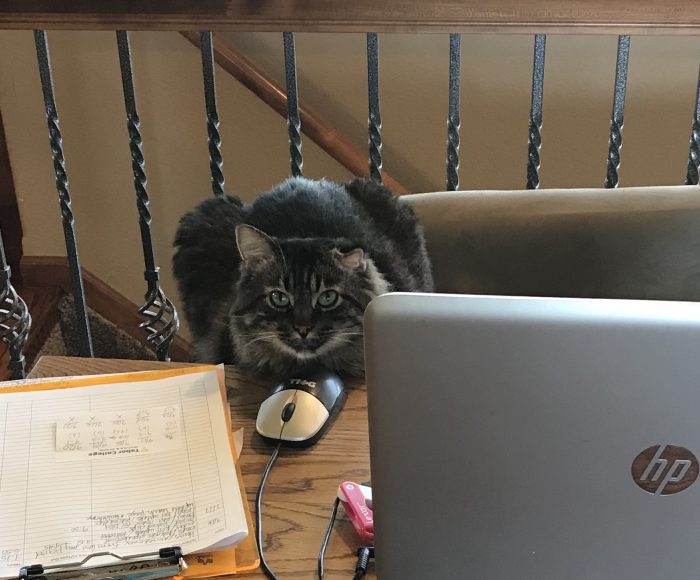Encouragement, Support, and Staying Connected During Quarantine
Last week we conducted a small survey to see how our readers were feeling supported and encouraged, how they were supporting and encouraging others and what has helped them stay positive. We were overwhelmed by the positive answers and examples you gave us.
First, we asked you:
How much have you felt supported and encouraged by someone with whom you work since the COVID-19 crisis has developed? The average of all responses was a “4” (1 = Not at all; 5 = Extremely)! We were glad to learn that many of you are feeling supported and encouraged during this difficult time.
Next, we asked you to answer two open-ended questions:
- Please give examples of some ways you have been encouraged by someone else.
- Please give us examples of some ways you have tried to encourage those with whom you work.
Responses to these two prompts produced some distinct categories like: general answers and specific examples, work related and non-work related, the heart-felt and the fun. Here are some of the most common responses and the biggest take-aways from your replies.
Keeping in touch is key. Nearly everyone mentioned keeping in touch as part of their response. Video options (Zoom, Skype, FaceTime, Microsoft Team) were preferred but people mentioned lots of ways they have been keeping in touch with co-workers: snail mail, DM, text, email, phone, social media. One respondent summed it up perfectly; “Be visible, reach out often.”
But staying connected goes beyond work topics and takes many forms: sending and sharing encouraging e-cards or humorous memes, motivational quotes, jokes, favorite TED talks and podcasts, inspirational notes and emails.
Work talk. Lots of respondents discussed the non-work-related things that have been encouraging them. But several of you also mentioned the support you get when you DO talk about work. People appreciated when managers checked in to make sure they had the training and technology to transition to new work-at-home set ups. Supervisors mentioned the positive responses they got when they were able to be flexible with expectations, schedules, and outcomes. Discussing topics together like relaxing deadlines when needed, keeping the focus on key projects, and helping team members problem solve were also examples shared.
Another aspect of “work talk” that came up multiple times dealt with transparency and communication as a way to reduce stress and fears. “My boss alleviated worries about imminent layoffs, giving a realistic timeline that pushed the layoffs out a year.” One manager stressed the importance of telling their team what they know when they know it. Another wrote that they made sure their employees had an “understanding where they fall on the ‘change curve’ with relation to the news of pending staffing adjustments.” People appreciated knowing the latest work news – even if it isn’t entirely positive – because it is better than trying to guess what might be coming down the pipeline or listening to rumors.
Non-work talk. Most people noted the importance of talking about things that weren’t work related. Even when people are video-conferencing about work, they take time to talk about how they are doing. In fact, many pointed out that they make sure to start their meetings by asking about each person and sharing how they are and what they’ve been doing outside of their job responsibilities. Some take time to share stories of bright spots in their week or a moment of joy they have experienced.
Several people mentioned that they either take time during virtual work meetings or set times to meet virtually outside of regular work meetings to create space for water cooler chats or hallway talks – places you might normally stop and chat with coworkers about movies, sports, or life in general. Keeping this kind of connection helps keep a bit of normalcy and levity in our work relationships.
Our Appreciation at Work team has made sure we acknowledge milestones and birthdays when we are together online. And those of us with “execu-cats” at home send each other pictures of their latest exploits.
Keeping things light. One of the more enjoyable subjects that came up was the ways that people are making their video meetings more interesting. Among those mentioned were incorporating music, signs, backgrounds, themes, and costumes. Several of you like to meet up with coworkers on Zoom (or other platforms) and host dance parties, WFH Bingo, trivia nights, virtual lunches (no work talk allowed), book clubs, happy hours, share shopping tips (where CAN you get more toilet paper in town?), movies, spirit weeks, and talk about hobbies. One person set up times where they could exercise with interested co-workers on-line and another hosts guided meditation.
One person collaborated with their supervisor to create a fun calendar with daily activities. When someone completes twelve of the nineteen items, their name is entered into a drawing for a prize. And yet another set up a virtual morning coffee chat on Zoom to meet and connect each day as people are able. “The president, vice president, CFO, and many of the other employees have joined me for morning coffee and chat. I have since opened it up for any time during the day if people want to take a break and jump on the virtual chat we can do so.”
Caring and Checking In. One of the most important things that we found repeated in answers was listening. Most often mentioned by supervisors, but also suggested by others, taking the time to be available and listen to each other whether it’s about fears and concerns or they just need to vent is key in making employees and coworkers feel supported and encouraged. Being allowed space to not feel okay and allowing people to take “time off” when they are feeling vulnerable can make a huge difference for people. Respondents who discussed this noted that they knew the person checking in on them was sincere and showed true concern, that they weren’t checking a box.
“I am in a position of influence–others look up to me. I let them see that I am occasionally having bad days, too, and that it’s OK. That we are all trying our best. I’m also leading by example: “Rough day? Sure. But tomorrow is a fresh start.” Resilience is being celebrated.”
“I’ve asked on our Teams chat for everyone to rate how they’re doing mentally and emotionally by dropping a number 1-10. 1 being “I’m losing my mind” to 10 being “euphoric.” It’s been interesting to see the ebbs and flows. I’ve reached out to a couple to follow up.”
One manager noticed the difference in responses they got when they stopped asking employees “how are you doing?” and started asking “how are you holding up?” The latter invited more discussion. Another held one-on-one virtual coffees with their direct reports. Yet another noted that the more touchpoints you have during the week with employees, the more likely you are to sense when they might be struggling and can follow up with them.
Everybody can be an encourager. From your feedback we found that encouragement and support can come from any direction and can be given similarly – to anyone from anyone. Managers and supervisors have been proactive in making sure they are communicating with and taking care of their employees, but their direct reports are also making sure to encourage them. Senior management has stepped in and taken a larger part in staying connected with employees. People feel strengthened in large group meetings, meetings with smaller groups and especially during one-on-one conversations. They feel supported by managers, by those they manage, and by peers. Any one can give and receive encouragement.
Listen. Celebrate small wins. Keep a positive yet honest attitude. Try to strike a balance between the stress and vulnerability created by our current situation and humor and optimism about the future. Take time to reflect and consider the ways your coworkers have been supporting and encouraging you and also how you might do more to support and encourage them.
Thank you all for sharing your ideas and stories with us. We hope they inspire new ways to reach out and stay connected with each other during this global crisis.
The Appreciation at Work execu-cats wish you a great week.
Tags: encouragement, supportCategories Acts of Service, Appreciation, Authenticity, Communication, Generosity, Leadership, Optimism, Peer Recognition, Perseverance, Relationships, Remote Employees, Stress management, Virtual teams





2 Comments
Loved it! What I particularly liked is that those are real examples from real people, we can feel it. I take home that anyone can encourage anyone, that’s uplifting! Finally, I loved the “execu-cats.”
Fanny, we were also very moved by all of the great real-world examples people sent us. I’m so glad they resonated with you, too. And thank you for your mention of our cat bosses. We love our execu-cats!